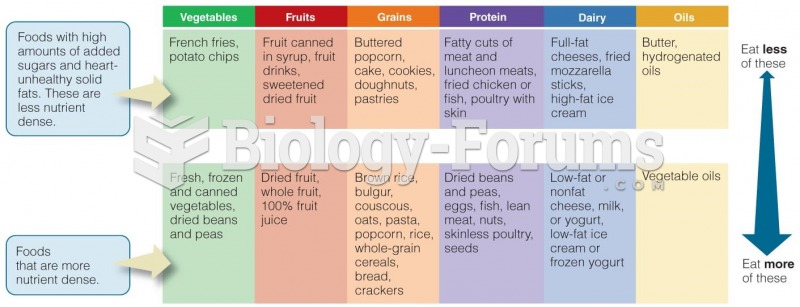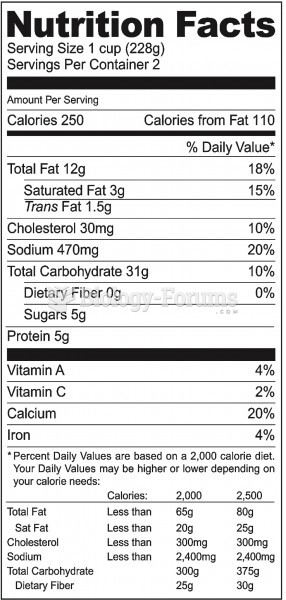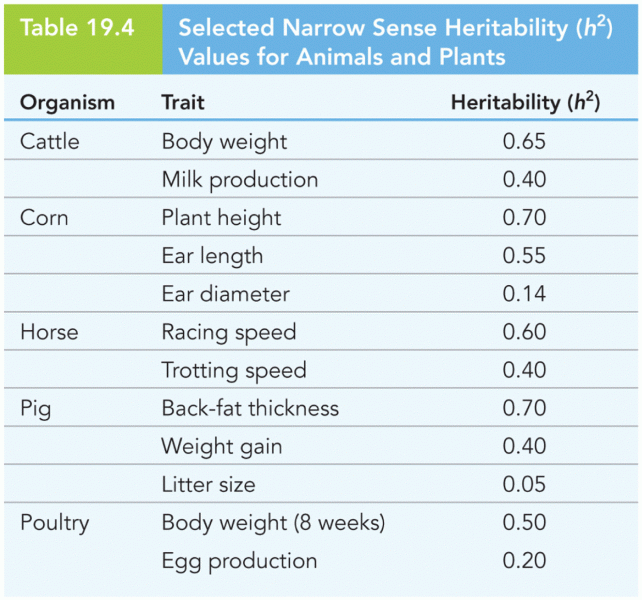|
|
|
A good example of polar molecules can be understood when trying to make a cake. If water and oil are required, they will not mix together. If you put them into a measuring cup, the oil will rise to the top while the water remains on the bottom.
The most dangerous mercury compound, dimethyl mercury, is so toxic that even a few microliters spilled on the skin can cause death. Mercury has been shown to accumulate in higher amounts in the following types of fish than other types: swordfish, shark, mackerel, tilefish, crab, and tuna.
The immune system needs 9.5 hours of sleep in total darkness to recharge completely.
In most cases, kidneys can recover from almost complete loss of function, such as in acute kidney (renal) failure.
When blood is exposed to air, it clots. Heparin allows the blood to come in direct contact with air without clotting.







